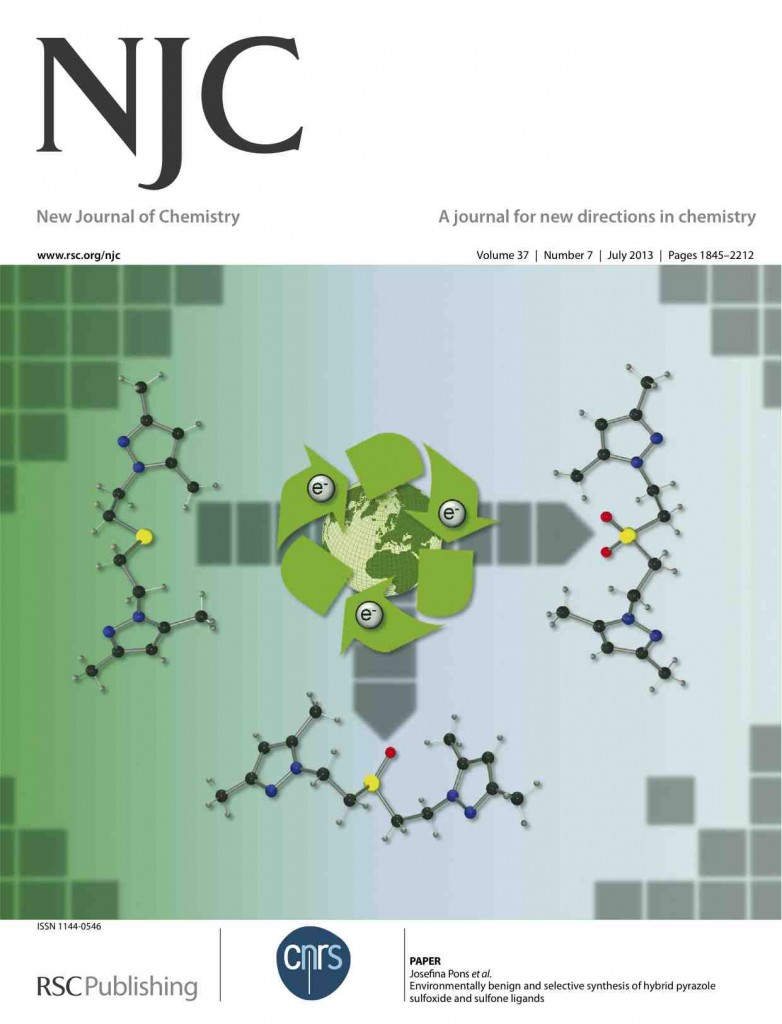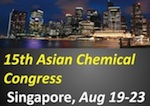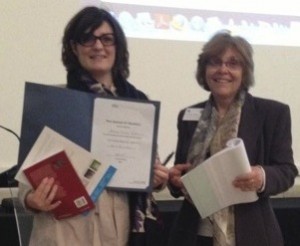Two authors of NJC’s August issue are interviewed for this month’s Meet our Authors feature.
 Our first author is Dr. Faina Gelman, who is researcher at the Institute of Geological Survey of Israel, The Hebrew University of Jerusalem. Her current research interests are environmental chemistry and stable isotope analysis. She particularly focuses on development of new analytical tools for stable isotope analysis and their applications for understanding chemical and biochemical transformations of organic compounds.
Our first author is Dr. Faina Gelman, who is researcher at the Institute of Geological Survey of Israel, The Hebrew University of Jerusalem. Her current research interests are environmental chemistry and stable isotope analysis. She particularly focuses on development of new analytical tools for stable isotope analysis and their applications for understanding chemical and biochemical transformations of organic compounds.
In their NJC paper, Faina with her colleagues demonstrated determination of bromine kinetic isotope effect on Grignard reagent formation –one of the fundamental reactions of brominated organics. ” Since our work combines novel analytical, theoretical and organic chemistry approaches, we wanted to submit it to a more general-focused journal, such as NJC is, from our point of view” commented on choosing NJC.
And what contemporary scientific issue is she most concerned about: “I am very much concerned about environmental pollution and would like to find an efficient way to treat this problem “she replied. Besides her research activity, Faina likes to spend time with her family.
Bromine kinetic isotope effects: insight into Grignard reagent formation by Lukasz Szatkowski, Agnieszka Dybala-Defratyka, Charlie Batarseh, Jochanan Blum, Ludwik Halicz and Faina Gelman ; New J. Chem., 2013, 37, 2241-2244; DOI: 10.1039/C3NJ00197K.
 The second author is Jürg Hulliger, who is a Professor of chemistry at the University of Berne, Switzerland. His research interest centers on Crystal growth, properties and solid state theory. His contribution to this month’s issue is Focus article that reviews on polar properties of solid molecular matter.”Here we review basic theoretical views on growth induced polarity in molecular crystals giving also all known experimental examples we have by today, which domonstrate polarity Formation. ”
The second author is Jürg Hulliger, who is a Professor of chemistry at the University of Berne, Switzerland. His research interest centers on Crystal growth, properties and solid state theory. His contribution to this month’s issue is Focus article that reviews on polar properties of solid molecular matter.”Here we review basic theoretical views on growth induced polarity in molecular crystals giving also all known experimental examples we have by today, which domonstrate polarity Formation. ”
If Jürg could solve any scientific problem, it would be: “Constructing equipment being able to say : a small Crystal of the size of a few 100 nm is (i) superconductive, (ii) is composed of these elements and (iii) shows this crystal structure. Such an Equipment may be used to analyze your combinatorial ceramic samples.”
In the non-lab world, Jürg is fascinated by interior decoration in the style of the 18th century, renovation of antics and art.
A stochastic principle behind polar properties of condensed molecular matter by Jürg Hulliger, Thomas Wüst, Khadidja Brahimi, Matthias Burgener and Hanane Aboulfadl New J. Chem., 2013, 37, 2229-2235 DOI: 10.1039/C3NJ40935J
We thanks to Faina and Jürg for accepting our invitation to talk about themselves and their work!









































